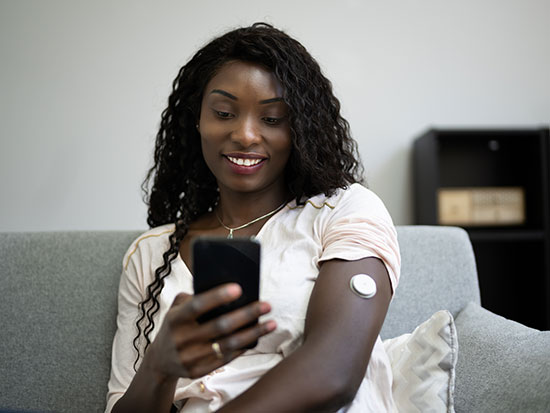Late last year, UAB photographer Steve Wood began to wonder if middle age was catching up with him. “I was tired all the time — I just had no energy,” he said. He was also losing weight without dieting or exercise, and was making an unusual number of trips to the bathroom.
Those last symptoms sounded familiar. Both of his sons have been diagnosed with Type 1 diabetes, so Wood knows all about insulin injections, test strips and glucose meters, and how changing blood sugar levels can affect the body. But Type 1 is usually diagnosed during childhood. Wood went to see his sons’ doctor, Fernando Ovalle, M.D., director of the UAB Multidisciplinary Comprehensive Diabetes Clinic, thinking he might have Type 2 diabetes. He left with a surprising diagnosis — it was Type 1 — and a little patch on his upper arm that syncs to his smartphone, giving him an instant update on his blood sugar levels. It is called a continuous glucose monitor.
“I probably check it 20 times a day,” Wood said. “I am still trying to regulate my insulin — how much did I give myself before that meal, how did it work? Was it too much, too little? It depends on the meal: Pizza does this, pasta does that. I can look at my phone and see the trends, quickly. If you get a down arrow, your blood sugar is starting to drop. If there are two arrows, it is dropping really fast. You can head it off before it gets bad.”
